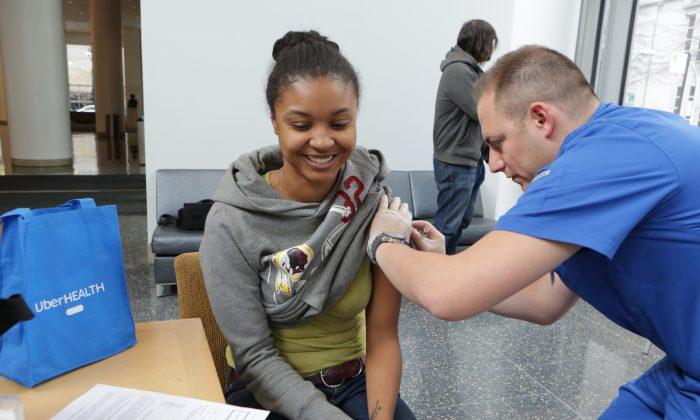WASHINGTON—When it comes to big global disease outbreaks, the most consistent pattern is delay, according to Dr. Michael Bell. Delay lets a disease gain a foothold.
For example, had HIV been identified quickly, it could have been stopped, but instead it spread around the world. The Ebola outbreak of 2014, the largest in history, might have been contained. But it simmered in rural areas in West Africa for a long time before health care professionals learned about it.
Bell is deputy director of the Division of Healthcare Quality Promotion at CDC’s National Center for Emerging and Zoonotic Infectious Diseases.
Three things keep him awake at night:
Number one is antibiotic resistance. We could return to a pre-antibiotic world, according to Bell. As more and more bacteria develop resistance to drugs, “we are looking at a possibility of people dying from simple wounds.”
Two or three generations ago, “blood poisoning” could and did kill people who had gotten a small scratch. A red streak would travel along the skin from the injury. It was a harbinger of death.
Antibiotics make other life-saving medical care possible, and in a post-antibiotic world a person with cancer, for example, could not have a bone marrow transplant. “If I get hit by a truck, a talented surgeon can put me back together, but she can’t do anything about the road grit and poop in my belly gash,” he said. For that, he needs antibiotics, and if they are gone, the chance of surviving that injury is gone, too.
A promising new kind of antibiotic is on its way, but for now, Bell thinks it is time for government to incentivize the development of antibiotics. The government could find a way to keep them profitable for pharmaceutical companies, with patents or tax breaks, or subsidies.
Right now more profit is in medicine for lifelong chronic diseases. An antibiotic drug with a brief life span, that doctors caution everyone against overusing, is not the logical best place for a business to sink its research and development dollars.
Number two is the importation of new and known diseases.
“I am often surprised by how we fail to get up in arms about flu deaths,” said Bell. It kills children and healthy older people. “It mutates every year.”
When the flu vaccine is done right and “we are lucky” it is great. This year, of course, is not a lucky year for flu, because the vaccine is not a good match for the main strain that is circulating, H5N1. The possibility of a deadly flu pandemic that overwhelms hospitals is the stuff of nightmares, according to Bell.
Number three is health care-acquired infections—people going to the hospital or doctor’s office and catching a disease they did not have when they arrived.
“Let me firmly pull on my health care acquired infections hat,” said Bell, who is an expert and a pioneer in that area.
By following a checklist and doing everything right, hospitals can eliminate such infections. But nurses are busy, the pool to hire nurses from is shrinking, and cleaners are often part-time, he said.
Tech can help, however. There is a little robot that looks like R2D2 that sprays a mist of hydrogen peroxide. There are UV sanitizers.
“I want to see perfect care in our hospitals,” said Bell.






